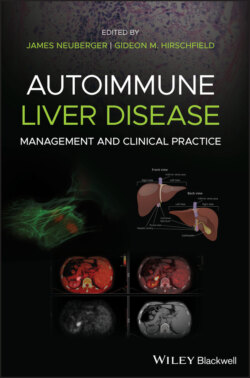Читать книгу Autoimmune Liver Disease - Группа авторов - Страница 43
Introduction
ОглавлениеUntil the identification of human autoimmune diseases at the dawn of the twentieth century proved Paul Ehrlich's concept of horror autotoxicus to be correct, clinicians believed that the immune system was incapable of reactions against self‐tissues and organs. To date, over 80 human autoimmune diseases have been identified, ranging in nature from systemic to localized. The genesis of autoimmunity requires loss of immune tolerance to self‐antigens and results from the complex interplay of genetic, epigenetic, immunologic, and environmental factors (Figure 2.1) [1]. Genetics confers susceptibility for autoimmunity, not for a specific autoimmune disease. Thus, susceptible patients often have more than one autoimmune disease [1].
While complex genetic susceptibility and environmental triggers suggest that autoimmunity results from “bad genes, bad luck,” this notion neglects the evolutionary advantage of robust immune responses to a broad array of antigens, including some autoantigens. An evolutionary survival advantage likely explains the unexpectedly high frequency of autoimmune reactions in healthy humans that fail to progress to autoimmune diseases [2].
Autoimmune hepatitis (AIH), primary biliary cholangitis (PBC), and primary sclerosing cholangitis (PSC) are classified as autoimmune liver diseases (AILDs). However, comparison of each of these AILDs with classical autoimmune diseases reveals shared and atypical features (Table 2.1). Knowledge of the concepts of autoimmunity can aid gastroenterologists and hepatologists in management and counseling of patients with AILDs and in understanding the rationales and sites of action of future therapies. Thus, this chapter addresses five major themes: (i) innate and adaptive immunity in the context of the liver as an immune organ; (ii) generation and maintenance of tolerance to autoantigens; (iii) risk factors for autoimmunity; (iv) loss of immune tolerance to autoantigens and perpetuation of autoimmune diseases; and (v) prospects for prevention of autoimmunity and therapeutic control of autoimmune diseases.
Figure 2.1 Interaction of factors required for generation of autoimmune diseases. Autoimmune diseases, including AILDs, result from the complex interaction among factors involving genetic susceptibility, the status of the cumulative immune response repertoire, an individual's immune regulatory capacity, environmental triggers, and the influence of the microbiome.
